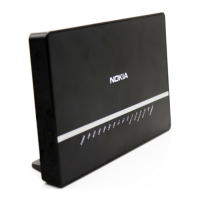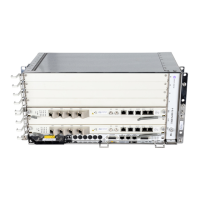Virtual Private Routed Network Service
538
FD 100/320Gbps NT and FX NT IHub Services Guide
3HH-11985-AAAA-TQZZA Issue: 13
7.10.10.31 overload-include-stub
Table 569 overload-include-stub command
7.10.10.32 overload-on-boot
Table 570 overload-on-boot command
Description This command changes the overload state of the local router so that it appears to be
overloaded. When overload is enabled, the router can participate in OSPF routing, but is not
used for transit traffic. Traffic destined to directly attached interfaces continue to reach the
router.
To put the IGP in an overload state enter a timeout value. The IGP will enter the overload state
until the timeout timer expires or a no overload command is executed.
If the overload command is encountered during the execution of an overload-on-boot
command then this command takes precedence. This could occur as a result of a saved
configuration file where both parameters are saved. When the file is saved by the system, the
overload-on-boot command is saved after the overload command.
Use the no form of this command to return to the default. When the no overload command is
executed, the overload state is terminated regardless the reason the protocol entered overload
state.
Default no overload
Parameters timeout seconds — Specifies the number of seconds to reset overloading.
Values: 60 —1800
Default: 60
Item Description
(2 of 2)
Item Description
Syntax [no] overload-include-stub
Context configure>service>vprn>ospf
Description This command is used to to determine if the OSPF stub networks should be advertised with a
maximum metric value when the system goes into overload state for any reason. When
enabled, the system uses the maximum metric value. When this command is enabled and the
router is in overload, all stub interfaces, including loopback and system interfaces, will be
advertised at the maximum metric.
Default no overload-include-stub
Item Description
Syntax overload-on-boot [timeout seconds]
no overload
(1 of 2)

